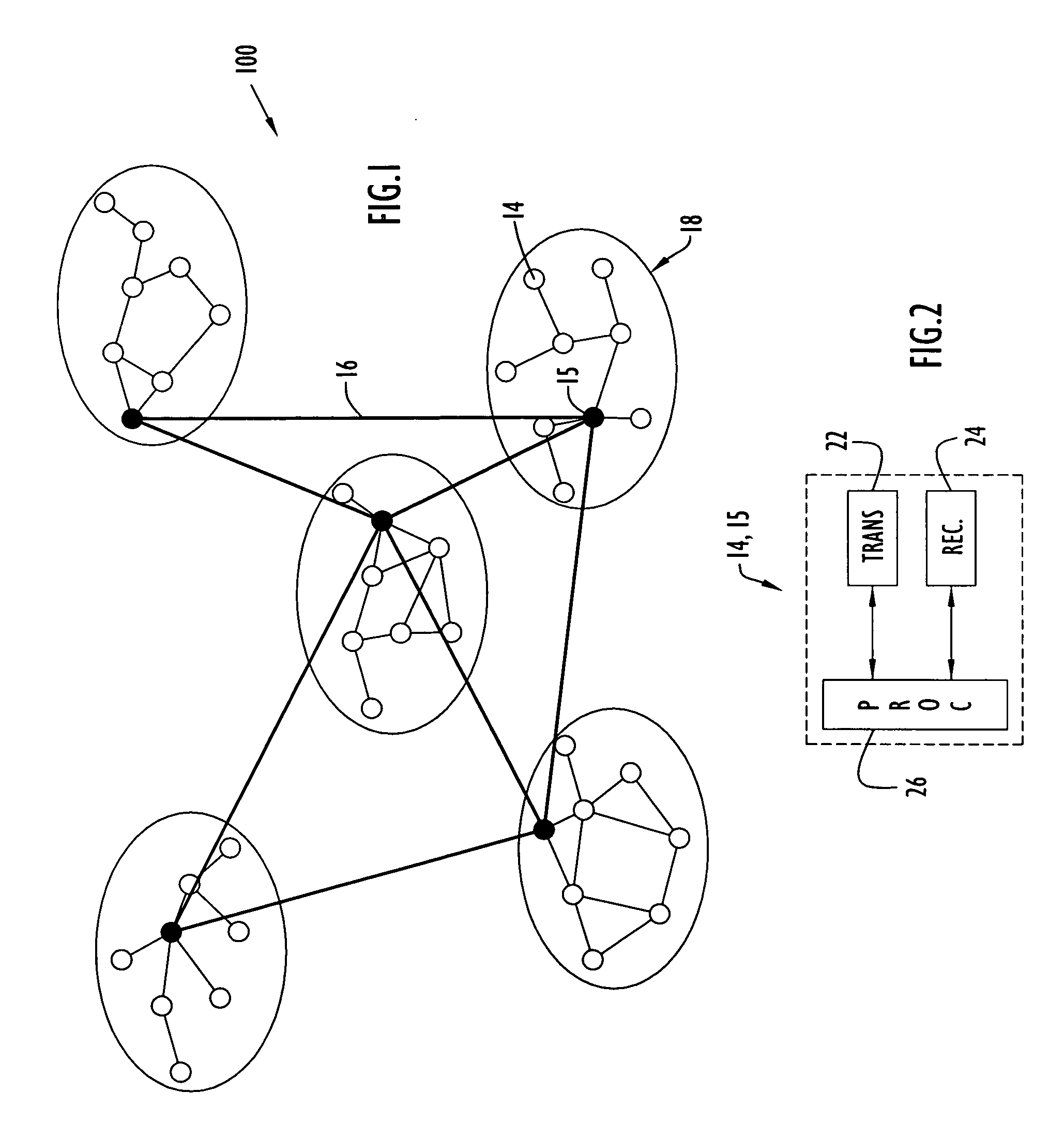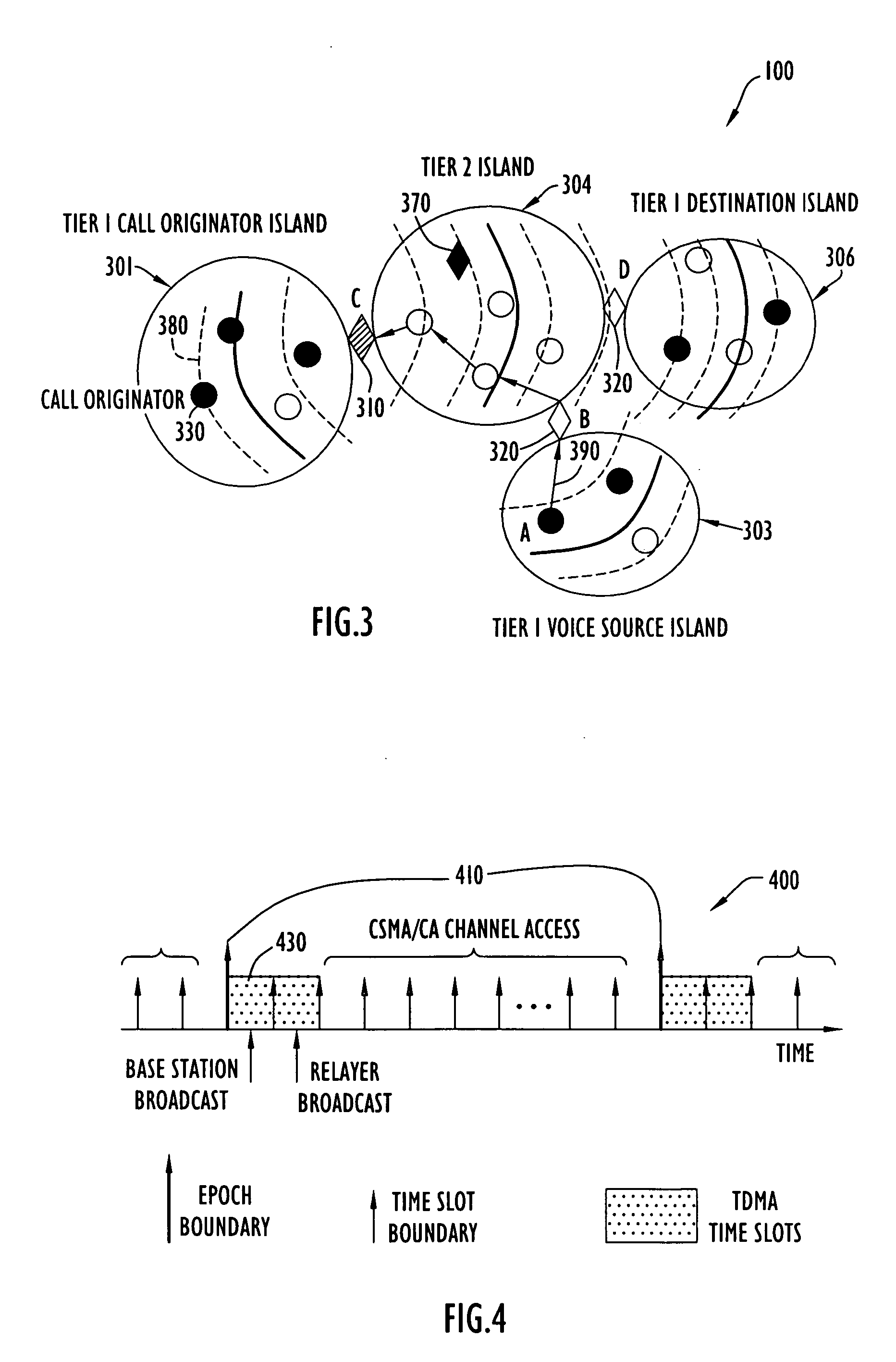Method and apparatus for multipoint voice operation in a wireless, AD-HOC environment
a multi-point voice and wireless technology, applied in the field of multi-point voice operation in a wireless, ad-hoc environment, can solve the problems of frequent re-compute of routes, interruption of data connection, and obsolete state information used by traditional routing protocols, so as to improve the signal range, improve the strength, and avoid additional overhead
- Summary
- Abstract
- Description
- Claims
- Application Information
AI Technical Summary
Benefits of technology
Problems solved by technology
Method used
Image
Examples
Embodiment Construction
[0025] The present invention provides conference call capability in a multi-tiered network architecture, such as the Small Unit Operations Situational Awareness system (SUO SAS). However, the present invention may be applied to various types of networks. An exemplary network architecture that may be employed by the present invention is a multi-hop, wireless, Ad-Hoc network. This type of network does not include an infrastructure (e.g., there is no fixed base station as in a cellular network, where a single-hop environment of a cellular network becomes a special case) and may be utilized in a hostile network environment (e.g., a tactical battlefield, etc.) with unfriendly jamming.
[0026] An exemplary wireless Ad-Hoc network including network nodes according to the present invention is illustrated in FIG. 1. Specifically, network 100 includes a plurality of nodes 14 arranged in islands 18. Each island is in the form of a flat, multi-hop network and includes corresponding island member...
PUM
 Login to View More
Login to View More Abstract
Description
Claims
Application Information
 Login to View More
Login to View More - R&D
- Intellectual Property
- Life Sciences
- Materials
- Tech Scout
- Unparalleled Data Quality
- Higher Quality Content
- 60% Fewer Hallucinations
Browse by: Latest US Patents, China's latest patents, Technical Efficacy Thesaurus, Application Domain, Technology Topic, Popular Technical Reports.
© 2025 PatSnap. All rights reserved.Legal|Privacy policy|Modern Slavery Act Transparency Statement|Sitemap|About US| Contact US: help@patsnap.com



